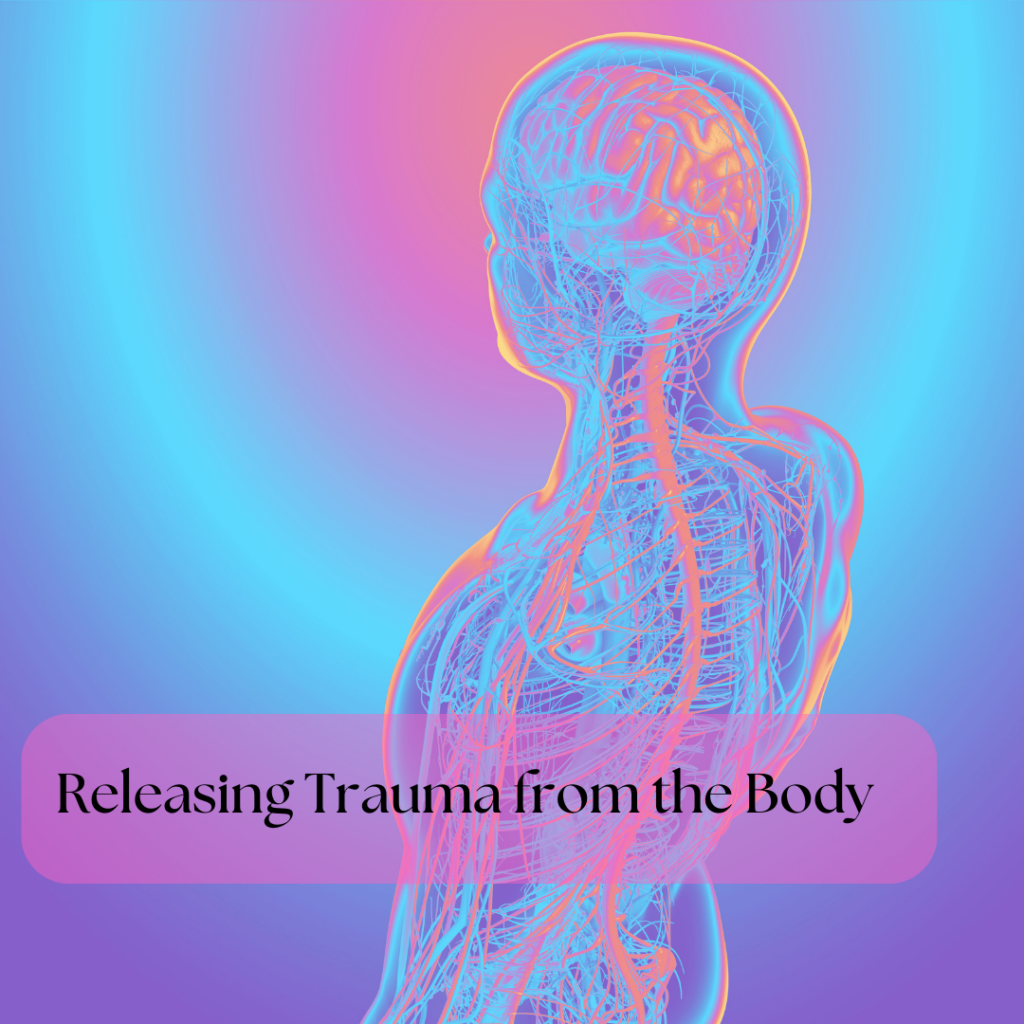Your body remembers your stressful/traumatic experiences. Experiences can be integrated in your body as: sensations, particular sounds, smells, sight, taste, and emotions. Body memories are often implicit, and your explicit memories are stored in your brain, so you can recount at any given moment. Over time, your explicit memories fade or change as time passes. When your explicit memory begins to fade, it can live on in your body in the form of physical sensations and/or behaviours.
Your body memory is not limited to your individual experiences, but body memory can be passed down through generations if your family has experienced a collective or individual unprocessed trauma. Collective body memory is sometimes difficult to detect, and is sometimes experienced as a mental health disability and/or chronic health issue.
Unprocessed trauma becomes trapped in your nervous system as fragments at times. When your fragment body memory does not fit into your system and/or the reality of your day to day life: this can create distress; involuntary movements and behaviours; and generalize feelings of being unsafe. So what can you do with these unprocessed body memories trapped inside? Releasing trapped memories is not a linear process, so there should not be linear expectations of changes. It is important to honour your ancestors’ experience of trauma and overriding their nervous system, and recognize in some ways you are releasing generations of stress and harm. Releasing trap memories often requires a combination of different forms of therapy, movement, curiosity, and patience. Here are some suggestions to start your healing path:
Somatic Therapies: Somatic therapies focusing on the body’s sensations and movements is a recommended approach to releasing body memories. Somatic therapies focus on emotional regulation, grounding, implicit memories, and reconnecting with the body. Some examples of suggested therapies include: EMDR; Sensorimotor Psychotherapy; Somatic experiencing.
Physical Exercise: Physical movement allows you to be present for your body. It is important to choose exercises which you are interested in. If you don’t know what that is, it’s time to be curious and try different exercises, dances, and/or sports which allows your body to move. Engaging in regular physical activity can release endorphins, which can help alleviate stress and improve mood.
Art and Creative Expression: Engaging in creative activities like art, drama, and/or dance allows for expression of the non-verbal. Allowing yourself to tap into abstract expressions, can help release what is being held inside.
Breathwork: We breathe 24/7 without consciousness. However, experiences of trauma can change the way we breathe by holding our breath often and/or aversion to noticing our lungs. Reconnecting with your breath can be done with a mental health professional, trauma informed yoga practitioner, and/or mediation. Techniques like diaphragmatic breathing or the 4-7-8 breathing technique can be beneficial.
Supportive Relationships: No one can heal alone. Our nervous system is designed to be co-regulated with others. It is important to be connected with like minded people, kind and compassionate individuals for your nervous system to experience some rest.
Professional Bodywork: Body memories require body work to reorient how to release. Your body naturally releases everyday without thinking, however, the body requires extra support when it comes to trauma. Trauma informed massage therapists, acupuncturists, and naturopathic doctors, and/or reiki practitioners can help release physical tension and promote relaxation. It is important to discuss your trauma history with the practitioner before undergoing any treatments.
Self-Compassion: Learning how to cultivate self-compassion practice towards your body. Learning how your body supports you, and sending love and gratitude creates spaces for trauma to release. Self compassion helps the body to notice it does not have to fight all the time for survival.
Spirituality: It’s not necessary to be connected to a spiritual practice to release trauma; however, a spiritual practice can help create a sense of peace of mind. The connection of something or someone bigger than you can help give permission to release. Knowing you do not have to release trauma alone can generate a sense of inner peace.
Everyone’s healing journey is unique, and cannot be prescriptive. There needs to be room to learn about your body needs and strengths in order for there to be permission to let go of the body memory. The body needs to know it is not alone or leaving you to fight this world alone.Your body memory is resourceful and wise, and needs to sense patience, safety, and love. Seeking professional support is strongly suggested on your healing journey.




